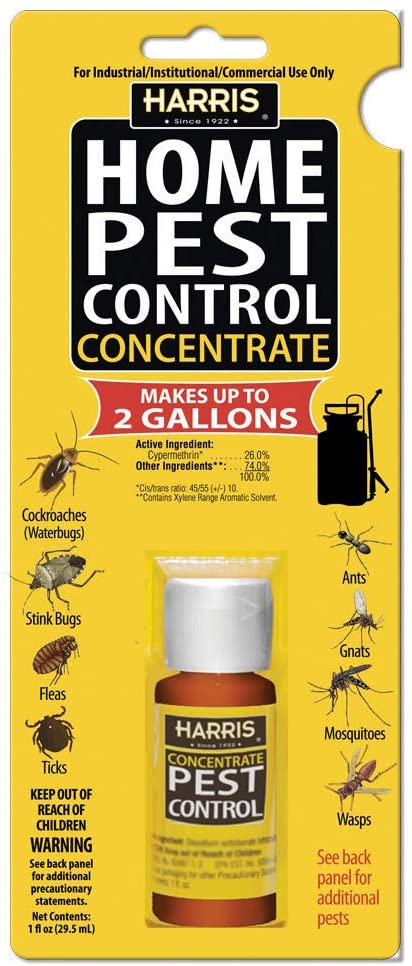Reliable A1 Bed Bug Treatment in Charlotte - Safe and Proven Approaches
Reliable A1 Bed Bug Treatment in Charlotte - Safe and Proven Approaches
Blog Article
Bed Bug Treatment Malfunction: Contrasting Chemical Vs. Non-Chemical Solutions
In the realm of parasite control, especially when dealing with the persistent concern of bed bugs, the selection between chemical and non-chemical therapy solutions can be an essential one. Both strategies use distinct advantages and disadvantages, influencing variables such as effectiveness, security factors to consider, and total expense. By taking a look at the nuanced information of each method, a clearer understanding of which path to seek in addressing a bed bug invasion can be acquired.
Performance of Chemical Treatments
Chemical therapies for bed insect problems have actually been commonly acknowledged for their potent and rapid efficacy in eradicating these pests. When taking into consideration the effectiveness of chemical therapies, it is critical to comprehend that they can supply a quick and comprehensive remedy to a bed pest trouble.
Additionally, chemical treatments have the benefit of using residual results, suggesting that they can continue to remove bed bugs also after the preliminary application. This recurring action is particularly helpful in combating any possible re-infestations. Furthermore, the quick action of chemical treatments can bring alleviation to people facing extreme bed bug problems, permitting them to gain back control of their space rapidly.
Safety And Security Interest In Chemical Solutions
One essential element that needs mindful factor to consider when making use of chemical solutions for bed bug treatment is making sure the safety of residents and the setting. While chemical treatments can be efficient in eradicating bed insects, they may present dangers otherwise managed effectively. Among the key safety and security worry about chemical services is the possible harm they can create to human wellness. Direct exposure to particular chemicals made use of in bed insect treatments can bring about respiratory issues, skin irritation, or various other negative responses, particularly in individuals with pre-existing problems or level of sensitivities. Furthermore, inappropriate application or dose of chemical pesticides can cause hazardous residues remaining in the treated location, presenting long-lasting health threats to passengers.
Additionally, the environmental impact of chemical options is one more significant factor to consider. Some pesticides made use of in bed bug therapies may be hazardous to advantageous bugs, wild animals, and ecological communities if they seep right into the dirt or water systems. It is necessary to use chemical therapies judiciously, complying with safety and security guidelines, and considering less hazardous options to mitigate these threats and ensure the reliable and safe monitoring of bed bug invasions.
Advantages of Non-Chemical Approaches
Considering the potential safety problems and ecological effect connected with chemical services for bed bug therapy, discovering non-chemical techniques presents a promising choice with numerous distinct benefits. Non-chemical therapies are ecologically friendly, as look at this now they do not add to air or water air pollution, making them a lasting option for insect control.
Additionally, non-chemical remedies can be reliable in targeting bed pests, including hard-to-reach locations where chemical therapies might not permeate. Methods such as warm treatment, vacuuming, steam cleansing, and cushion encasements provide complete obliteration without using dangerous chemicals. Additionally, non-chemical approaches can be much less turbulent, calling for minimal preparation and permitting quicker reentry right into treated locations. Generally, going with non-chemical bed bug therapy methods not just focuses on safety and security and environmental management but also ensures detailed and effective insect control.
Limitations of Non-Chemical Treatments

In addition, non-chemical treatments commonly require numerous applications to achieve successful removal. This can be taxing and may not always assure total removal of all bed pests and their eggs, specifically in hard-to-reach or hidden areas.
In addition, the success of non-chemical therapies greatly counts on proper implementation and thoroughness, which can be challenging for people without professional know-how. Poor application of non-chemical methods might cause incomplete obliteration, resulting in relentless invasions and the need for additional treatments.
As a result, while non-chemical therapies have their benefits, it is vital to recognize these limitations and consider them when identifying one of the most reliable technique for taking care of bed pest problems.
Cost Comparison: Chemical Vs. Non-Chemical Options
Offered the limitations linked with non-chemical treatments, a vital aspect to examine in the context of bed bug administration is the cost contrast between chemical and non-chemical choices. In comparison, published here non-chemical therapies like heat treatment or vapor can be much more pricey, with prices ranging from $1,000 to $6,000 for a whole home. While the first expense of chemical therapies might seem reduced, multiple treatments might be called for to totally eliminate the invasion, possibly increasing the general expense.
Verdict

Thinking about the possible security issues and ecological impact linked with chemical solutions for bed insect therapy, exploring non-chemical techniques offers a promising choice with a number of distinctive benefits.Provided the constraints connected with non-chemical therapies, a necessary element to evaluate in the context of bed insect administration is the price comparison in between chemical and non-chemical alternatives. In comparison, non-chemical treatments like heat treatment or steam can be extra pricey, with costs ranging from $1,000 to $6,000 for an entire home. While the preliminary expense of chemical therapies may seem lower, numerous treatments might be required to fully get rid of the infestation, potentially raising the general price.In conclusion, when comparing chemical and non-chemical bed insect therapy options, it is essential to consider performance, safety and security, advantages, restrictions, and price.
Report this page